Today Tomorrow Yesterday in Museum of Contemporary Art Australia
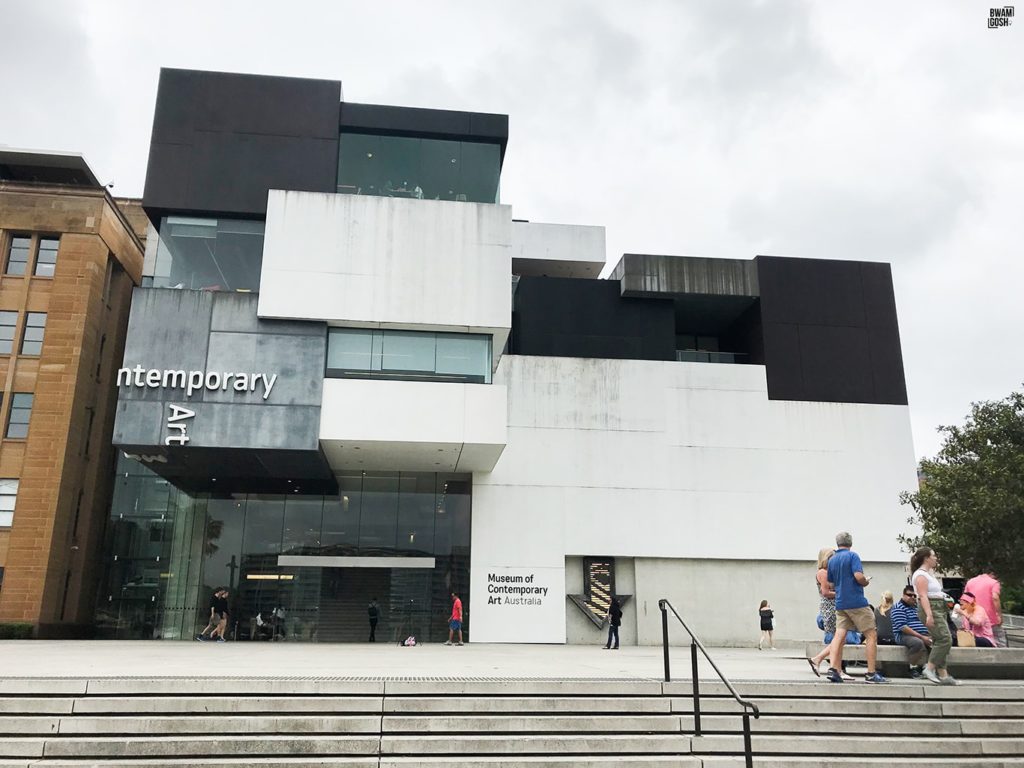
As I told you that I had no planned itinerary to get going to Sydney during my Melbourne wanders. My initial plan was taking a trip to Perth, but things changed split second as soon as I arrived in Melbourne, that what traveling is all about, isn’t it? The real traveler has no made-up plan on arrival. Yet, I never regret changing my plan to Sydney, though in the beginning, I did not know where to go in Sydney. Okay fine, most people want to go to the Opera Sydney, I just did not feel interested in going there.

My first destination in Sydney was the Museum of Contemporary Art Australia. I was so happy because Big Bus Sidney covered most of the routes as I took the bus because it easily reaches all of my destination in Sydney. So this is my first hop-off from the bus.
The Museum of Contemporary Art Australia
The MCA is a not[-profit organization that raises over 70% of its revenue from non-government sources. This is nice because not all museum does the same thing. The location of this museum is adorable as it is facing the opera house and view of the park. A day-trip was never enough that I got myself back there again just for sitting down on the grass, enjoying my lunch while watching waves rippling on the sea and the view with the museum as the background.

The visitor is welcome by Brook Andrew‘s work (born 1970), Warrang 2012, an animated LED arrow with lines under the arrow.

By the time I visited this place, Today Tomorrow Yesterday exhibition was on going there. As usual, getting into the museum, learning and enjoying life through art is always fascinating for me. With a big thing in my bag so that I had to move it to the front of my body so it wouldn’t touch any of the art. I held my camera in my right hand, just in case I found something I wanted to capture.
Today Tomorrow Yesterday Exhibition
It was located on the second floor of the Museum, which was easily accessed by elevator or even stairs. I found a big black clock as I entered the exhibition.
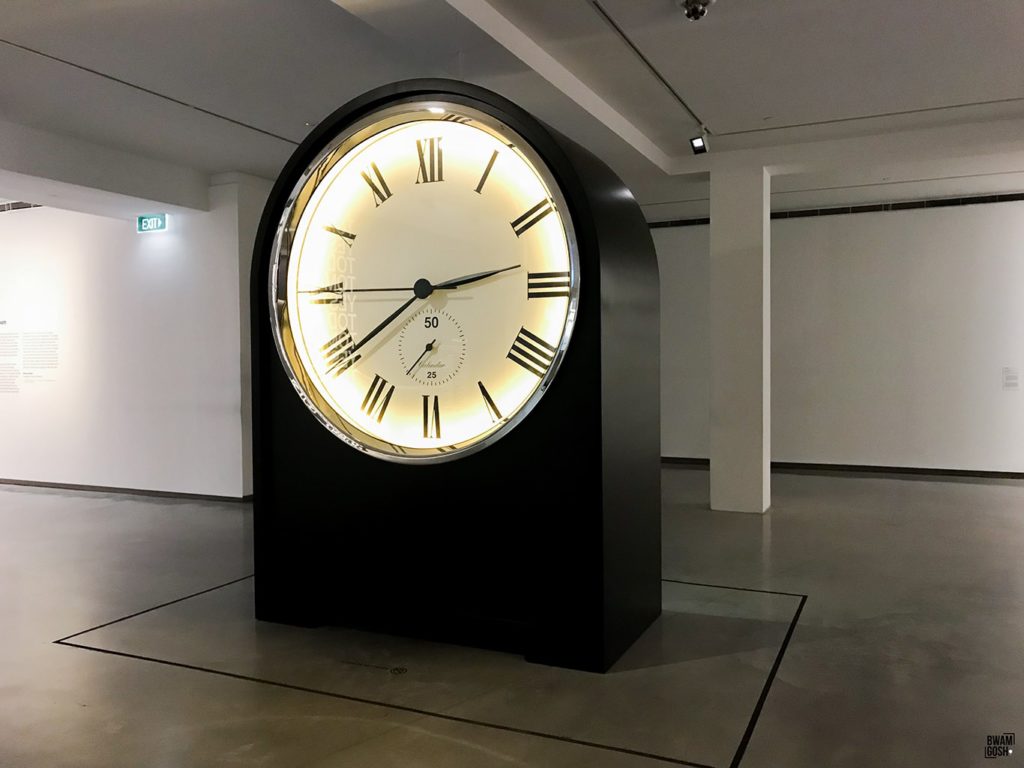
“Whoah!! Is it working?” That came into my mind when looking at it. It was bigger than I am.
Untitled (Clock) 2014 by Stuart Ringholt (born 1971).
They said it’s almost 3-meter-high. I amazed by it and If you have seen any small clock, you might think how he maintained to make this, but then I felt so sad. By the handbook, it is said that this large clock is also a fast clock. Ringholt devised it to complete the full rotation of a minute in 45 seconds. A day now lasts 18 hours, rather than the standardized 24. Time sped up seems to be symptomatic of life in this recent century, and also about our life. We always feel that “time is poor” as we live it, we wanted more hours because we feel 24 hours are not sufficient.
Yet, Ringholt thought was different, he insists that if we lived on a planet in which his clock was accurate, then we would have more time, not less: 576 days per year, to be precise. “What would be the biological reality of planet earth rotating once every 18 hours instead of 24? He asks. You might have less time, but you have more days in the year. So there’s a sense of losing something, and also gaining something. With an 18 hour clock, there’s a lot more yesterday. Which one do you prefer?

Araw Warul 2016 by Matilda Nona (born 1974)
Located just in front of the clock. Inspired by Badu Island, Matilda Nona tried to depict the time of the turtle-hunting season on the island. When Badu Islanders catch green turtles as a traditional food source. In an intricate design of overlapping spirals, Matilda Nona shows the turtles swimming against the strong tides during Sageraw Thonar, the dry season that runs from May to December. The turtles, dugongs, crocodiles, sharks, and fish that inhabit the coastal waters of the Torres Strait sustain the livelihoods and cultural and spiritual beliefs of Torres Strait Islanders. They handed down the knowledge of their cycles of mating and breeding, and of the best time to hunt them in an oral tradition on dance and song.
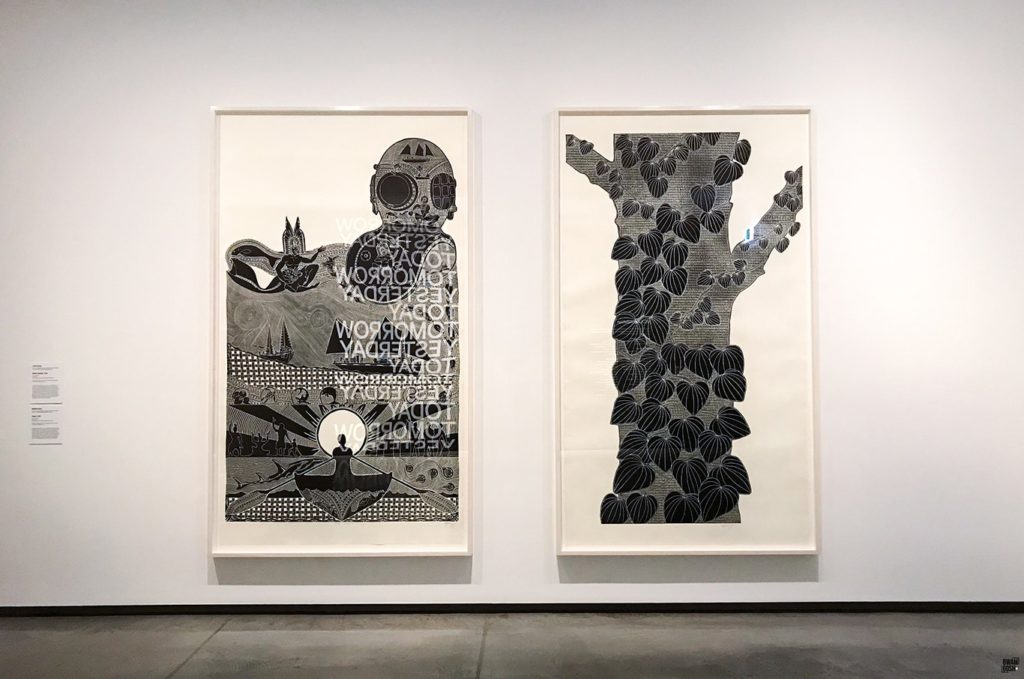
Badhu Habaka 2016 by Laurie Nona (born 1974)
It tells a story – also about Badu Island song and dance – about this pearl-diving father and uncle from the time of the Torres Strait’s pearling industry (1860-1960). In Nona’s patterning work is a mesh motif based on the woven grass-mat that every Badu Islander child is placed on when they are born. It accompanies them on their life journey as they sleep, eat and grow until they are finally laid to rest within. Representing life’s journey, the mat weaves together traditional and contemporary Badu Island life and culture in an everyday practice that has been maintained for generations, like the singing and dancing that relates past histories and more recent events.
Sawur 2016 by Matilda Nona (born 1974)
It’s another Matilda Nona’s work called Sawur 2016 which Matilda tried to share her traditional ethics about food sources and the season through the medium of local printworks. It depicts the leaves of the wild yam plant, Sawur, that grows on Badu Island on the Torres Strait. The yam is a staple food source for Badu Islanders, who harvest if from their kitchen gardens or from wild outcrops. Using intricate patterns and line work, Nona builds up a design that is both decorative and cultural significance. Torres Strait Islander cultural practices, knowledge and beliefs are traditionally passed down through oral culture, song, and dance.
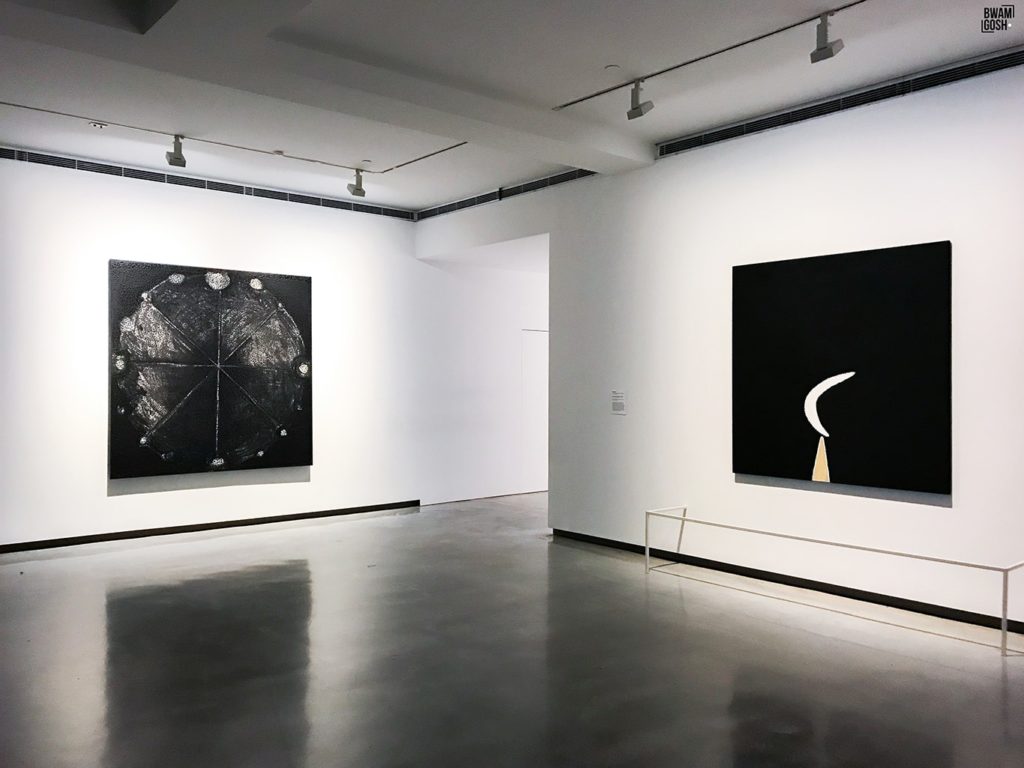
Garnkiny Ngarranggarni 2016 by Mabel Juli (born 1934)
Taking a look at this work that speaks about a story of forbidden love represented by the moon and stars. I notice a moon and a part of a star when I looked at, yet I felt sad (again).
From a narration, in my earphone, I heard that it tells of how society responds when someone loves the wrong person, and what the consequences are. In the story, a young man rejects his betrothed bride and admits his love of her mother, a beautiful woman with long black hair who later transforms into a serpent called Dawool. Driven out of his community, he climbs a hilltop and becomes Garnkiny (the moon), returning month by month for the rest of time. As he gets departed he angrily curses those who have denied him his true love: unlike him, he says, they will all eventually die, their bones bleaching for eternity in the desert.
Untitled (PSM) 2014 by Daniel Boyd (born 1982)
It is about the trajectory of information and how it passes back and forth over time and across cultures. Throughout the movement of information, details, associated facts along with historical events, objects, we could get lost as being curious. The paintings acknowledge that this is a process and our experiences of the loss. We recognize that we will never be able to fully comprehend either our past or future. It shows the idea of the cultural lens and the fact that we all have different points of view.

Every time I glance it’s just not me 2014 by Dale Frank (born 1959)
From the experiment with the performativity of painting, Dale uses a cocktail of lollypop pink vanished and lighter fluid sliding down to a mirrored surface in which the viewers can see a distorted image of themselves.
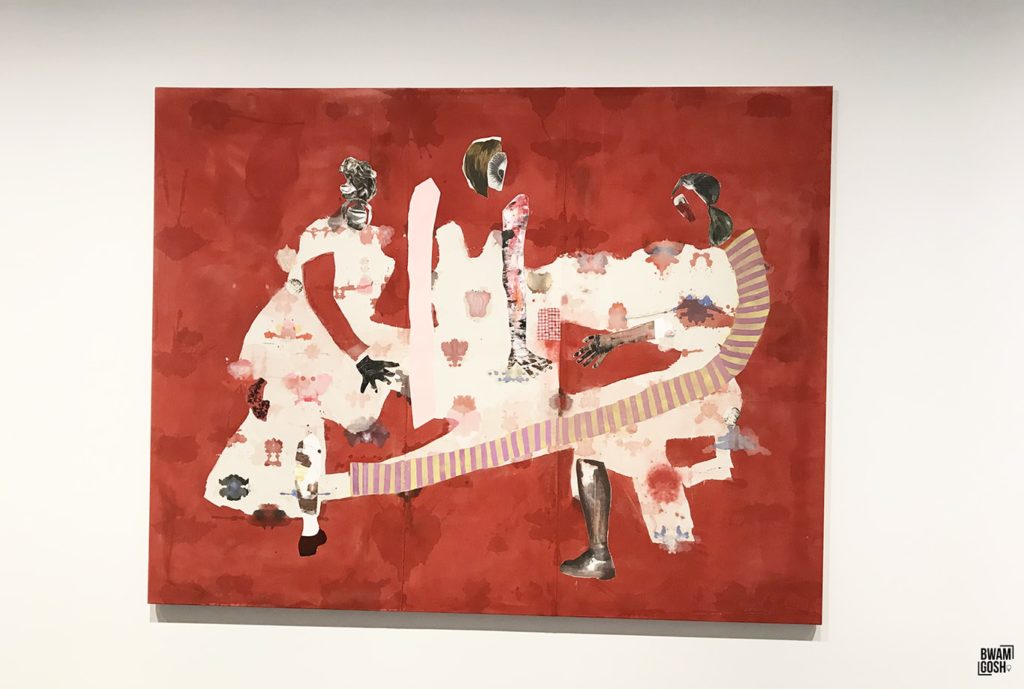
The craftiest of eyes (borrowed dress) 1994 by Sally Smart (born 1960)
It was not my first Sally Smart’s work yet I enjoyed her works on my SAM visit a few years before. In this work, Sally tries to share the ideas of identity and gender politics. She used the technique of cutting and pinning to emphasize this, a pin away from dismantling to emphasize both the cut-out and up attitude, to reconstruct a sign for political, psychological and aesthetical dismantle.
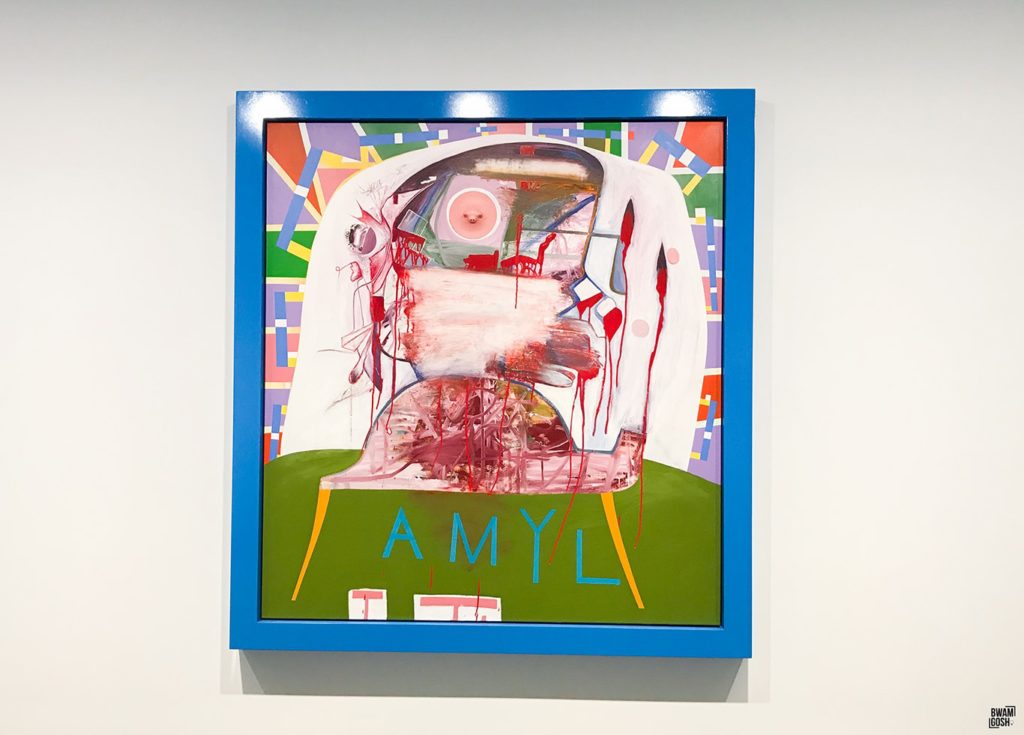
Amyl 2015-16 by Gareth Sansom (born 1939)
Gareth Sansom’s painting Amyl is a portrait of a psychedelic experience – the short-lived high of the party drug, amyl nitrite. The under control chaotic painting, with its vibrant patterned background and bloody center, evokes the artist’s initial taken drug memory in San Fransisco in 1979 when he thought he was “losing my mind… kind of the head on the painting”.
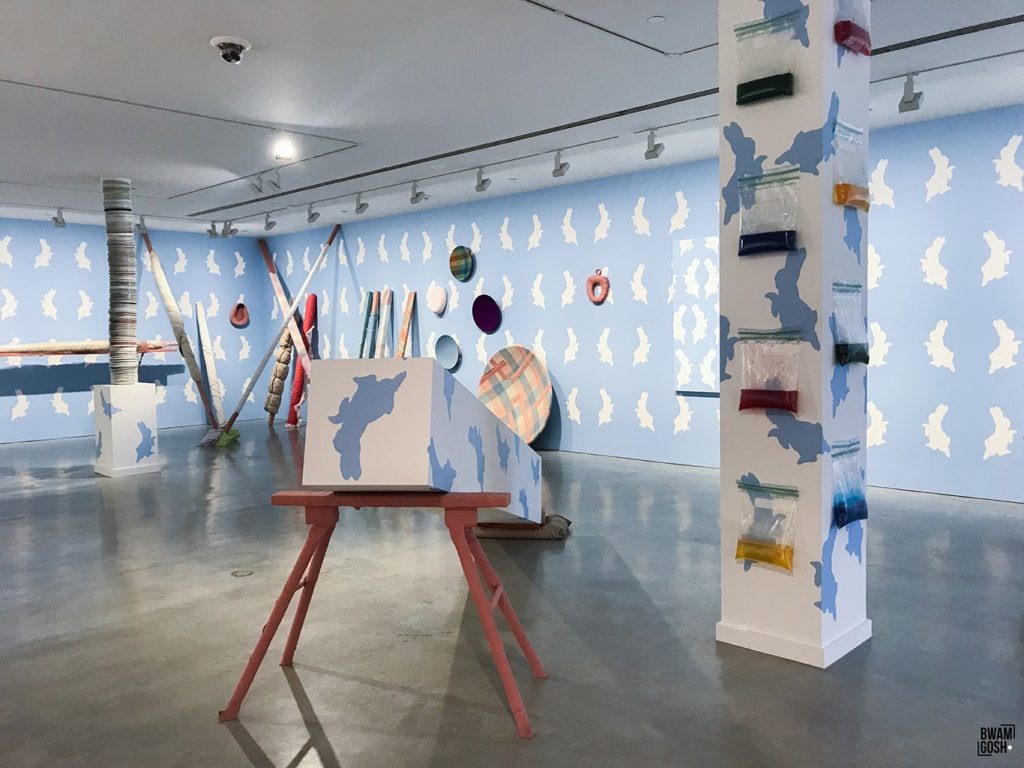
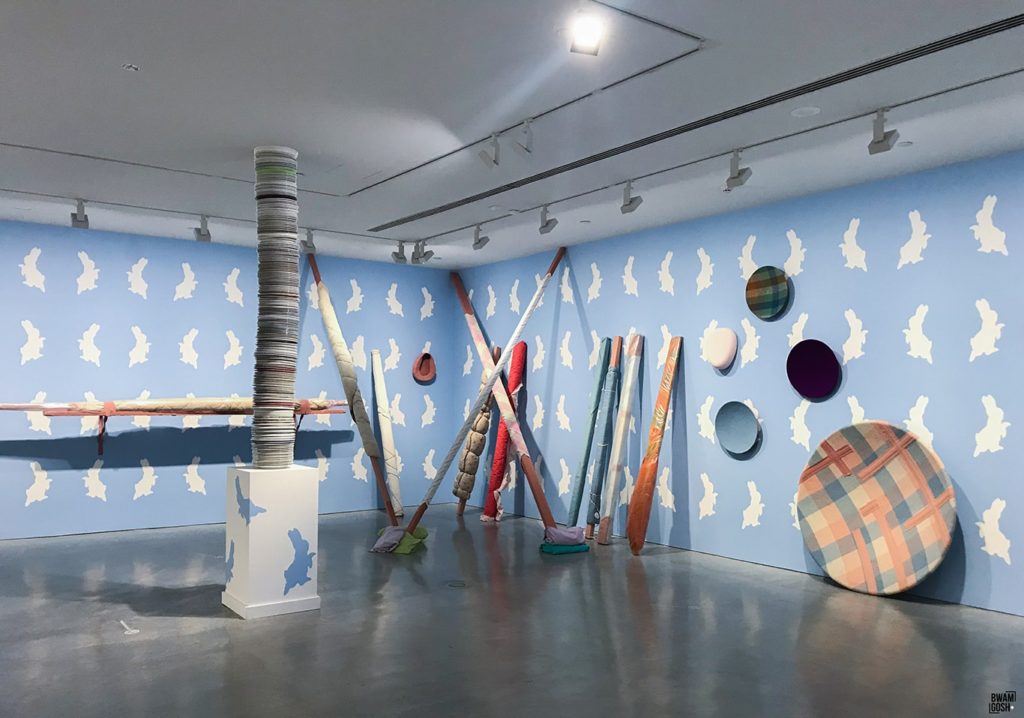
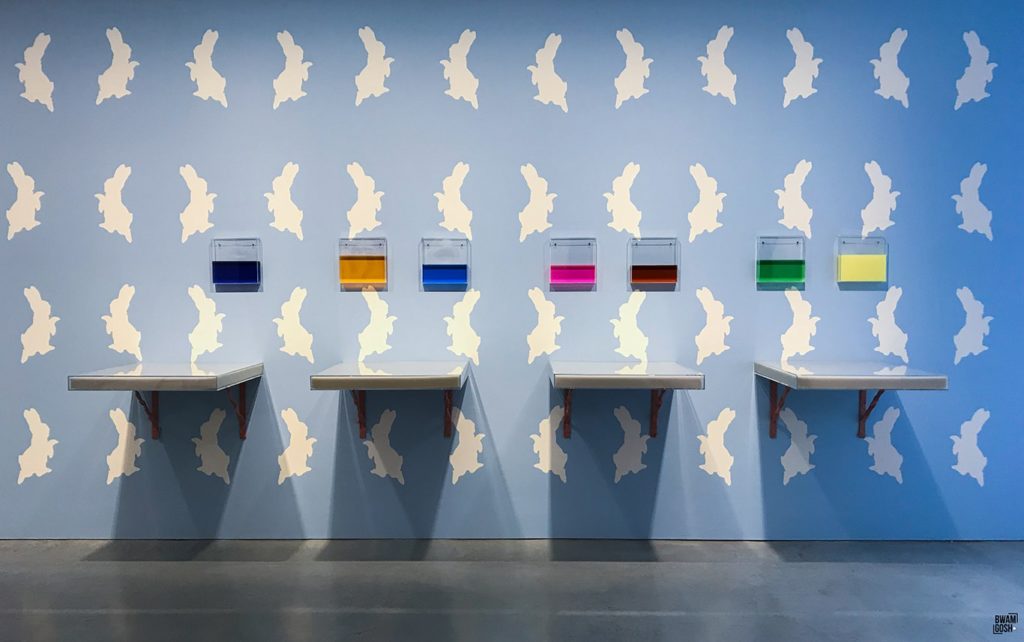
Untitled 1992-94 by Mikala Dwyer (born 1959)
It was hard to go around this work because there were many people tried to take pictures. I guess because it was kinda cute with the blue and those paintings all over the work. I managed to reach a good place where I could enjoy the art, then I noticed it was band-aids and blankets, and those sort of things that everybody could notice the kind of materials. So that’s why Mikala said “whether they think they understand the work or not, they’re in there”
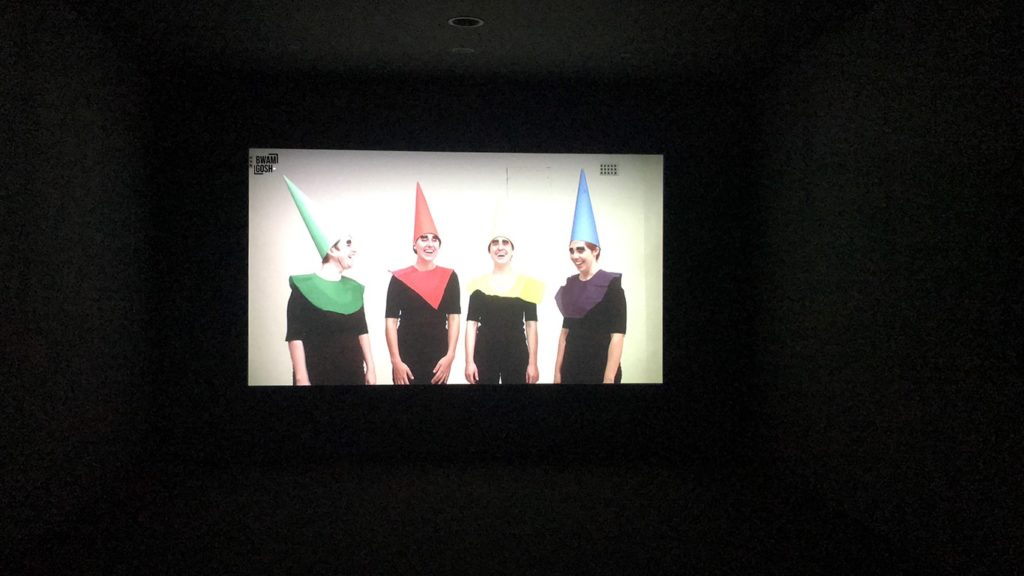
The one hour laugh 2009 by Barbara Cleveland 2
The one hour laugh 2009 by Barbara Cleveland (formerly Brown Council).
This one is seemingly different. I heard people laughing, but I didn’t see anyone laugh. When I entered a black area, there was a video of a group of people dressed in such costumes, their dunces’ hats, paper bibs and fake eyebrows
From laughing together for an hour, being quiet at first then slightly moving from genuine hilarity to embarrassment, strain, and boredom with different kind of laughs. It was kinda theatric, but people who watched it get started laughing as all together.

It is synthetic polymer painting on the wall by Matthys Gerber (born 1956) called Dove Tail 2013/16. Dove Tail is the type of the abstract forms he has used over the past decades. Both a painting and an object work is made from a set of instructions. A dovetail is a joinery technique typically used in woodworking where pins and tails are interlocked at the comers to put the wood together.
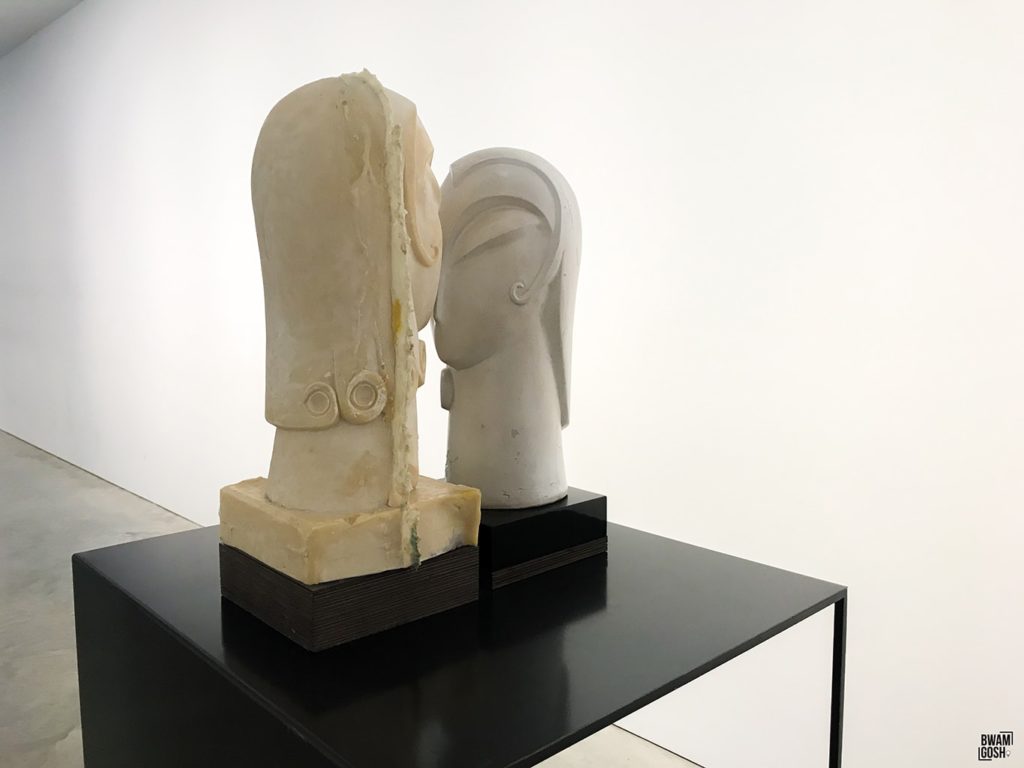
Soft Kiss 2011 by Sanne Mestrom (born 1979)
I knew it is a kiss right after I noticed that these sculptures are kissing. Sanne tried to explore the psychology, emotion, and culture into an art.
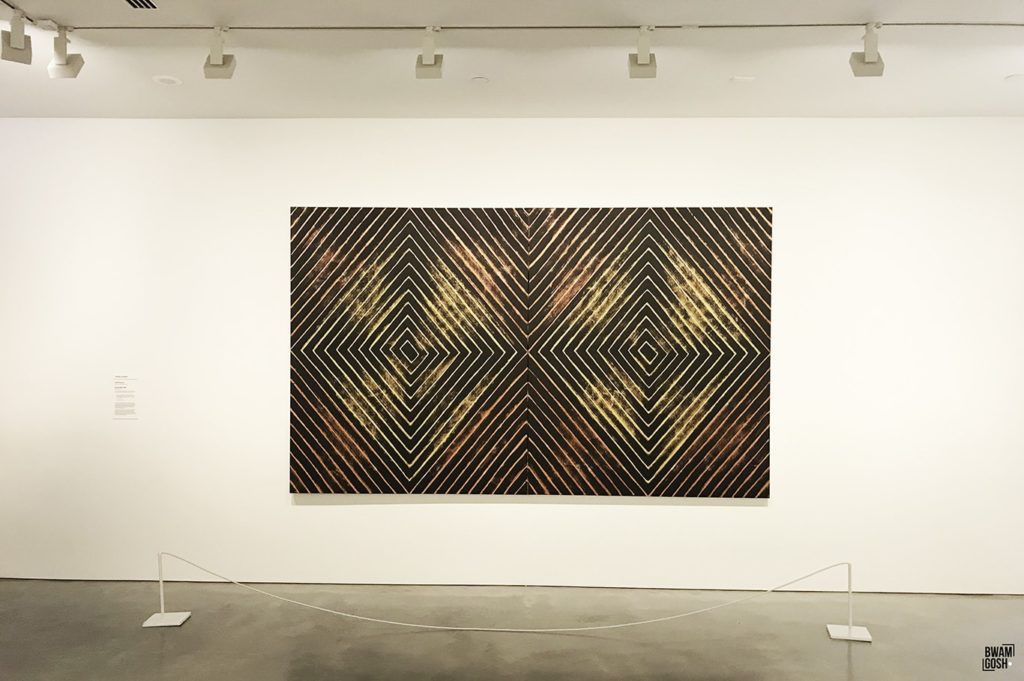
Number Nine 2008 by Gordon Bennett (1955-2014)
Making paintings about painting allowed Bennett to establish an identity for himself as an artist not limited to his Australian Indigenous heritage.

Using mineral, salt, and wood from her homeland, this is Ngayirr (sacred) 2015-17 by Nicole Foreshew (born 1982). Nothing is more between the garraba, marrin (body, the human body) and dhaagun (earth, dirt, ashes, land, soil).
Victory over death (for Paul Taylor) 1992 by Omants Tillers (born 1950)
It was dedicated as in honor of Tiller’s friend, an Australian writer Paul Taylor when he was dying of an AIDS-related illness.
Keep thyself as a pilgrim
and a guest upon the
earth to whom belongeth nothing
of worldly business
Manbuynga 2015 by Barayuwa Mununggurr (born 1980)
This is a sculptural mural based on Barayuwa.
The song story Manbuyunga depicts is of the Yarrinya Ocean in which Munyuku spirit manhunt their own brother, a whale called Miringyungu. After the dead whale washed up onto the beach, the spirit men used stones knives to cut the body. Upon realizing that they have eaten their brother in contravention of the law, they fling the knives into the ocean where they become a dangerously hidden sharp reef. This is the land and the waters which are protected by ancestors and elders through ceremonial and knowledge system that are today passed on through stories and design from one generation to the next.

Caravan 2008 by Ricky Swallow (born 1974)
Caravan represents a sort of hardened or fused time in which an impermanent or temporary set of forms become capable of outliving the people and events they were created to signal. Balloons are formed in a minute of our time and attached to structures, fences, awnings, letter boxes to signal and specify an occasion. Within this sculpture the balloons seem lost or detached from any occasion, moored to the floor by their weight and altered materiality, thus allowing the barnacles the opportunity to populate the surface. – Ricky Swallow, undated.
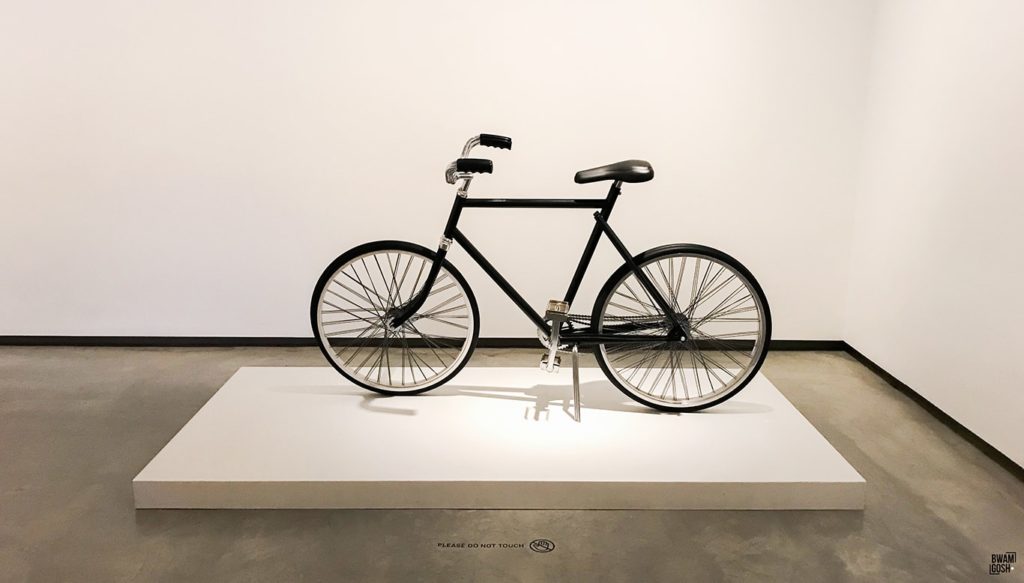
“No no no, you can’t ride on it” a staff approached a kid when he tried to get on it.
Bicycles 2008 by James Angus (born 1970)
James Angus explores the physics of objects and their manipulation. He changes ordinary objects in some way in his work – here, three bicycles make up one single sculpture. No wonder the kid thought he could get on it.
I’m all for slowness. I really do make my sculptures look like what they are. So this lends itself to using types. I think it’s important to give people something to hang on to when they look at what I do, something to take away and think about – and easily recognizable things help with this… it’s like taking something which is extremely familiar and disturbing it slightly…And it’s always easier to disturb something if you think you know where it may have come from in the first place. – James Angus, 2006.
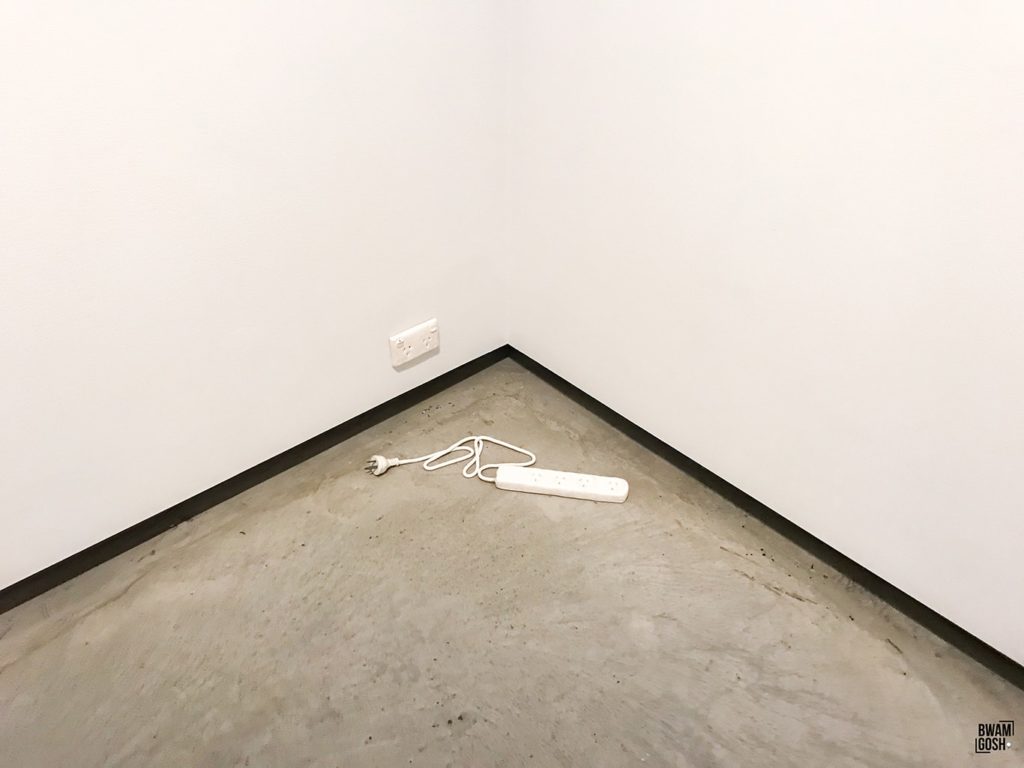
Untitled (useless, powerful) 2008 by Emma White (born 1976)
If I were not in my sense and didn’t realize I was alone, I would laugh as loud as I could. I thought someone left their belonging here, but then I realized that it was a part of the exhibition.

The Memorial Project: Black Wall 2015 by Kathy Temin (born 1968)
The sewn and upholstered wall of fur that is The Memorial Project: Black Wall combines both a private and a collective response to memory. Through her experience of loss of a parent and/with being the daughter of a Holocaust survivor that shows inside the art.

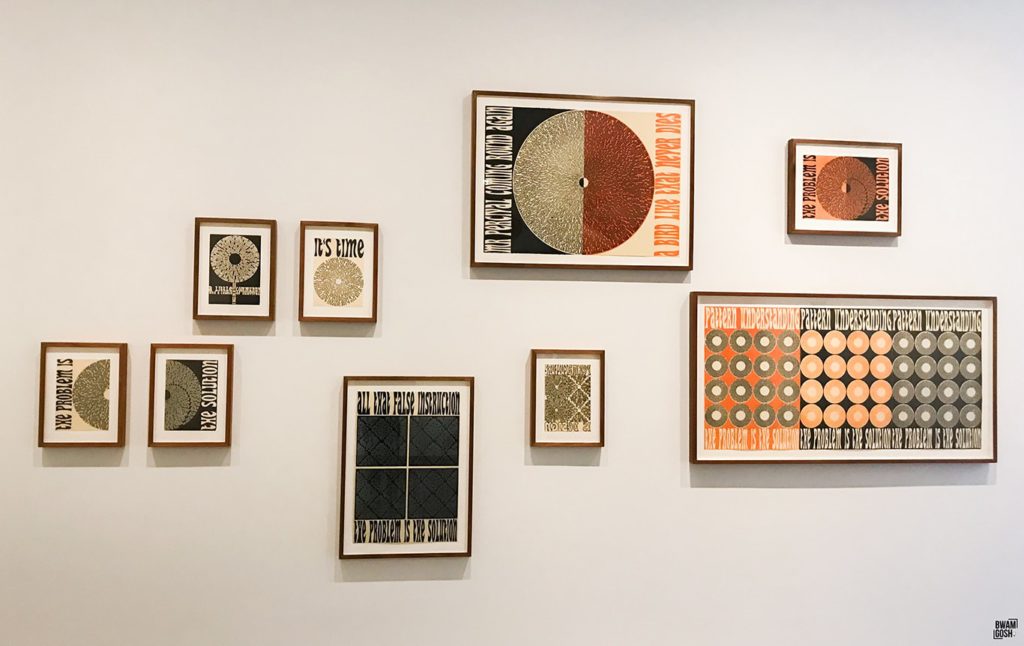
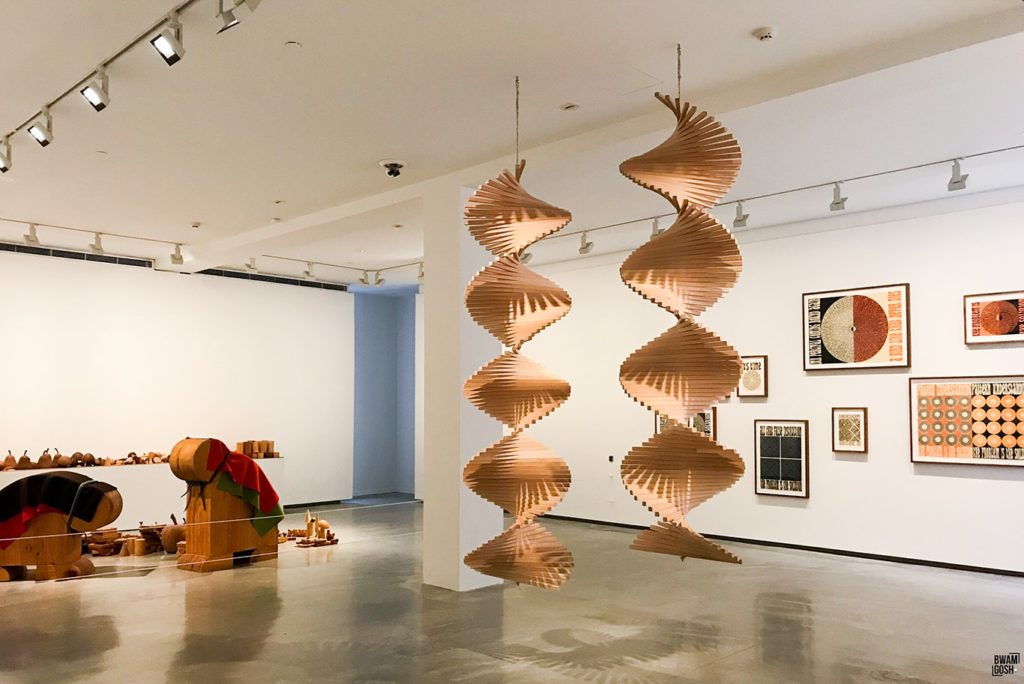
The Garden (here small gestures make complex structures) 2012 by Emily Floyd
The Garden was conceived deliberately for a specific audience – those who are blind or with low vision – as a multi-sensory and interactive environment, enabling new possibilities for experiencing language. With a variety of creative opportunities for touch, exploration, and play, the work consist of tactile objects including representation of vegetables, fruits, geometric shapes, braille blocks and Roman alphabet letters, made from recycled rare and common timbers, raw or polished with beeswax.
Learning group will be use this artwork at various times throughout the exhibition. Revisiting the original concept for this commission, to have ‘the opportunity to communicate and work with sculpture in challenging and unexpected ways’. – (Emily Floyd, 2012)
It’s Time Again 2008
Permaculture One
Permaculture Two
A Little Community
It’s Time (Again)
All That False Instruction
A Bird Like That Never Dies
Design Science
Pattern Understanding
The Problem is the Solution
Other arts
When I thought it was done, but I found out there were more.
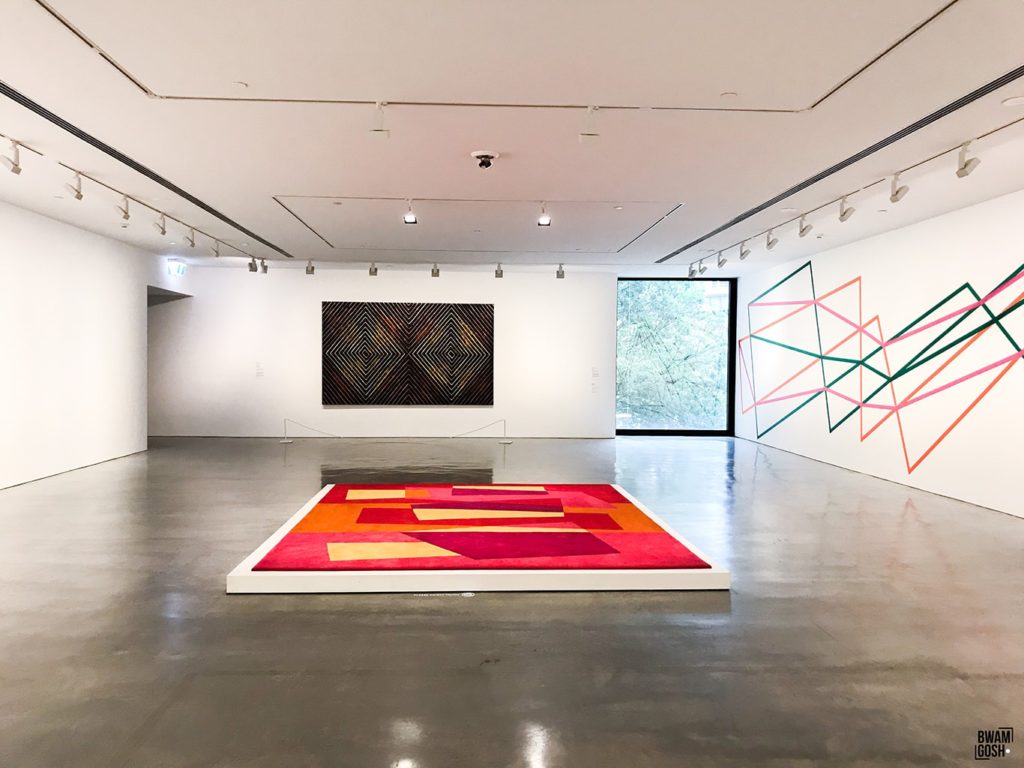
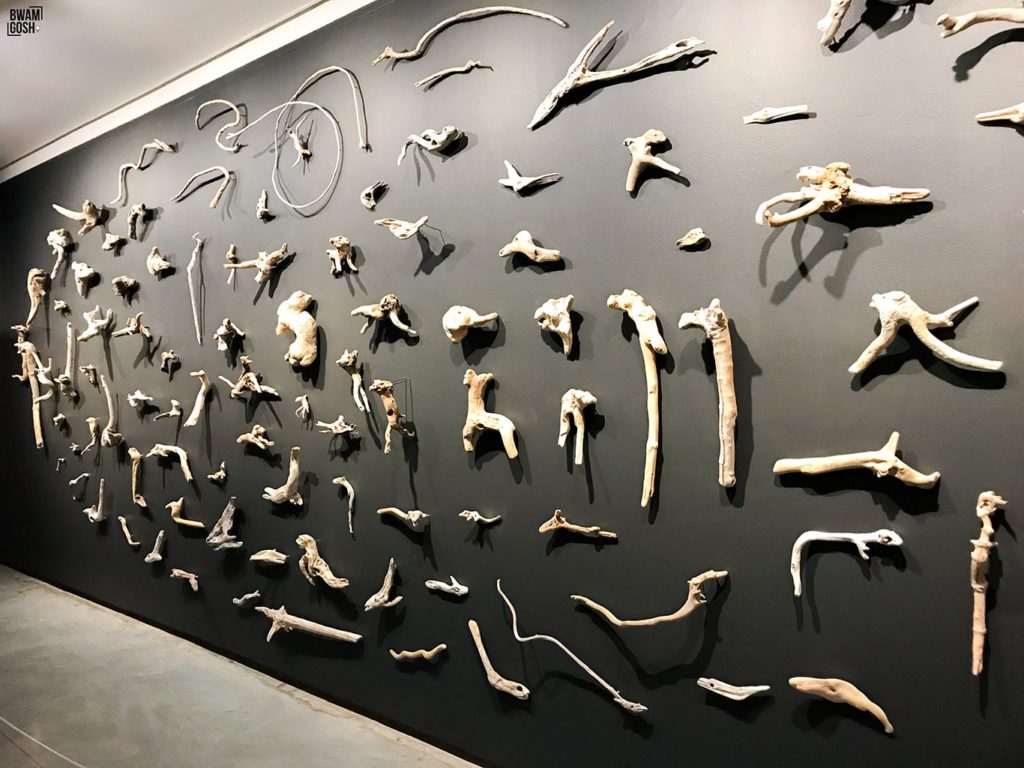


The Facilities
The location of this museum is pretty good. As it is facing the opera house and got a view of the park. A day was not enough as I went there again, just for sitting on the grass and enjoy my lunch while watching the sea and the view of the museum as the background.
They got you some facilities you might need or want to visit while you are there.
Information
Free Entry; Open daily: 10am-5pm | Wednesday: 10am-9am
How To Get There;
Train; The closest train station is Circular Quay Station (2-minute walk to MCA).
Bus; You can catch the bus to Circular Quay or George Street (5-minute walk to the MCA).
Download the free MCA App; Get the free MCA Australia app and get more out of your visit. Hear directly from the artists and go deeper into the artwork while you are in the museum.
It’s quite simple steps to follow;
1 Connect to their free wifi; select MCA Public; open your web browser to verify
2 Go to Google Play or the App Store and search for MCA Australia
3 Press install and download the MCA Australia App
4 Turn Bluetooth on, open the MCA Australia App and uncover artwork around you
5 don’t forget to ask a gallery host for free headphones
Access; The MCA welcomes all visitors and committed to making its program and services accessible to everyone. Ask a Host if you would like support for a disability or access requirement. | Free Wi-Fi is available throughout the building
Become a Member; Enjoy unlimited free entry to ticketed exhibitions, special events and more. Join on Level 1 or mca.com.au
Shop; MCA Store
Eat & Drink; MCA Cafe, Graze MCA
Other Facilities; Cloakroom, Lifts, Parent’s room, Toilets, Accessible toilet, National center for creative learning, The Lewis Library,

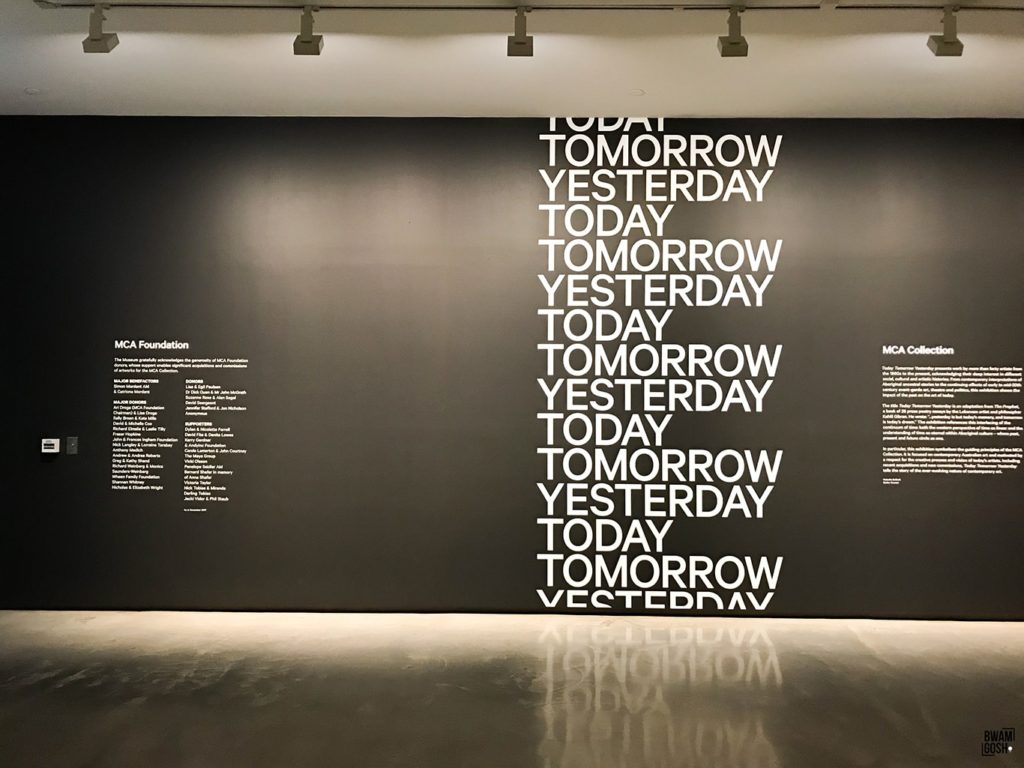
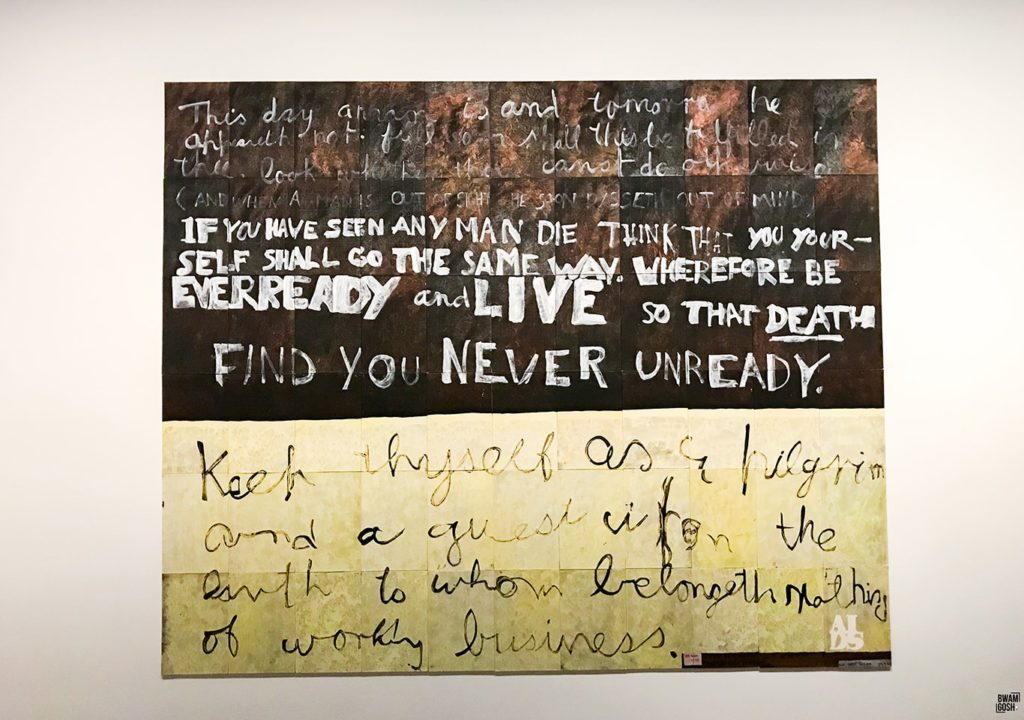



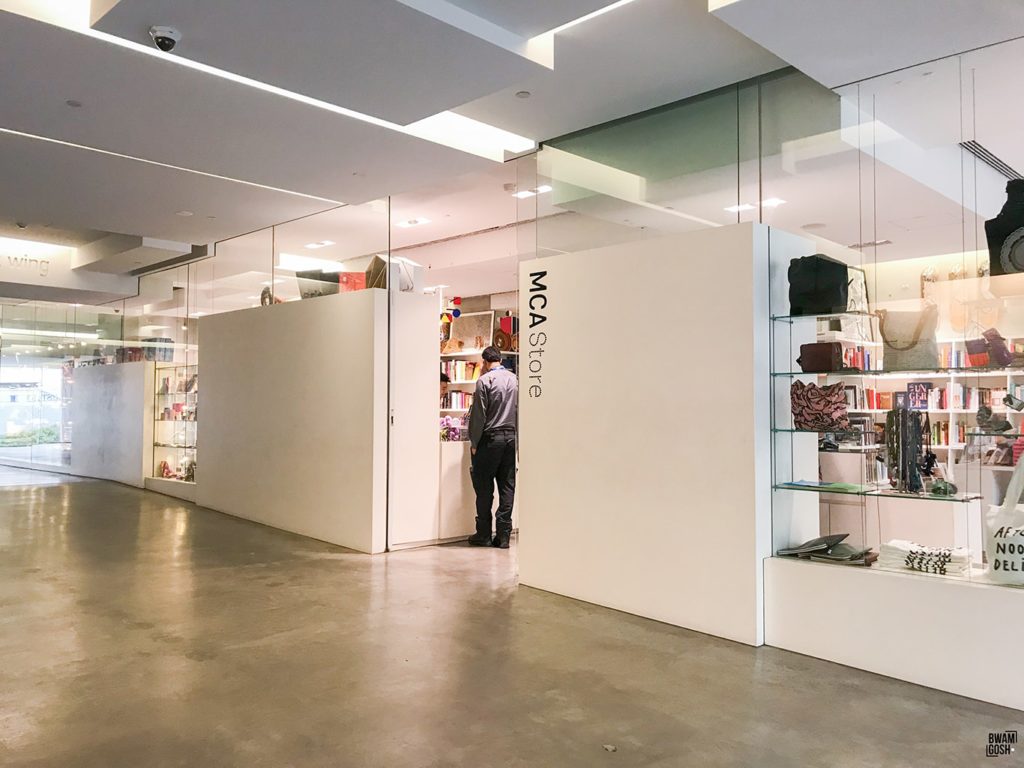

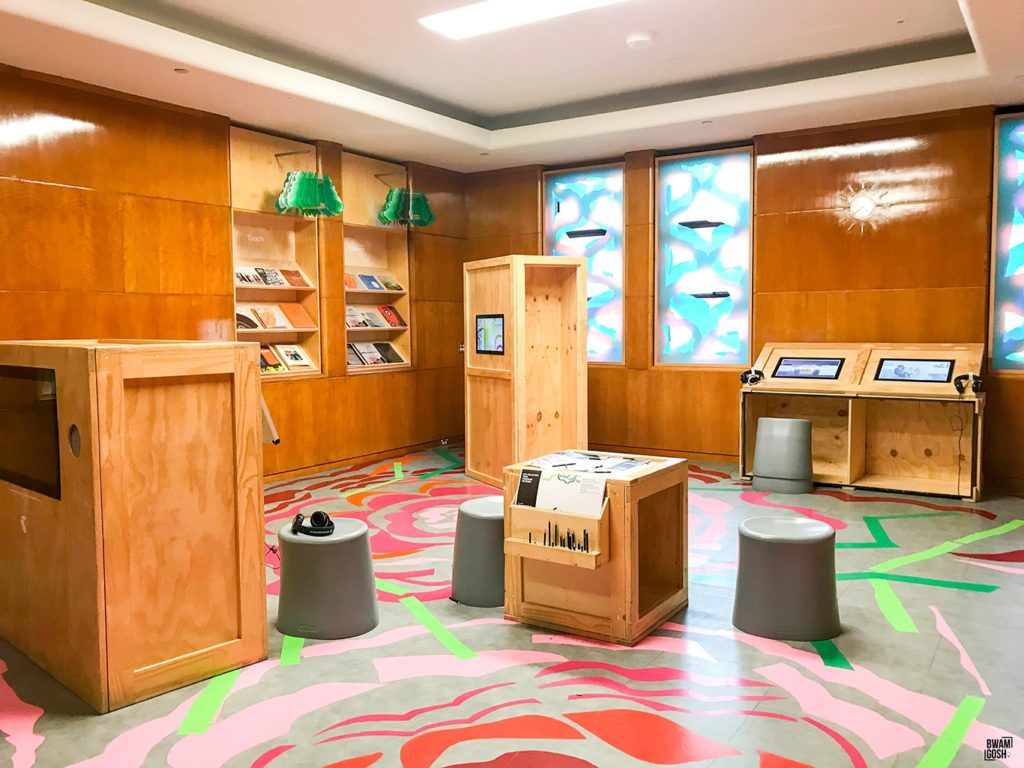
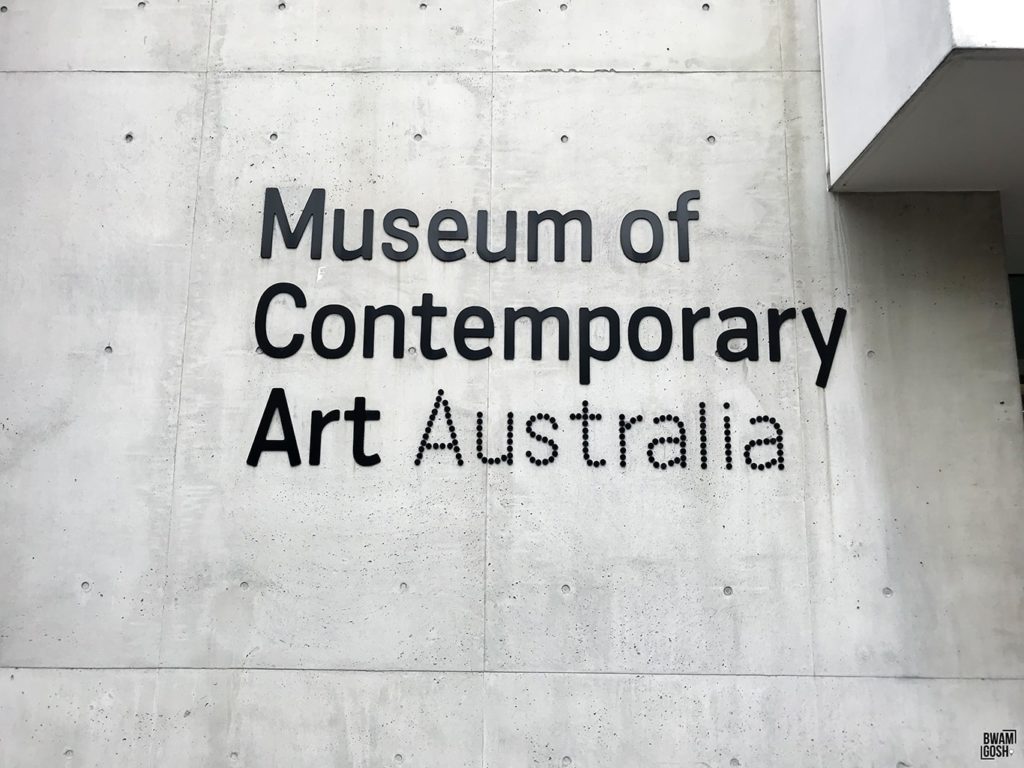



Comments are closed here.